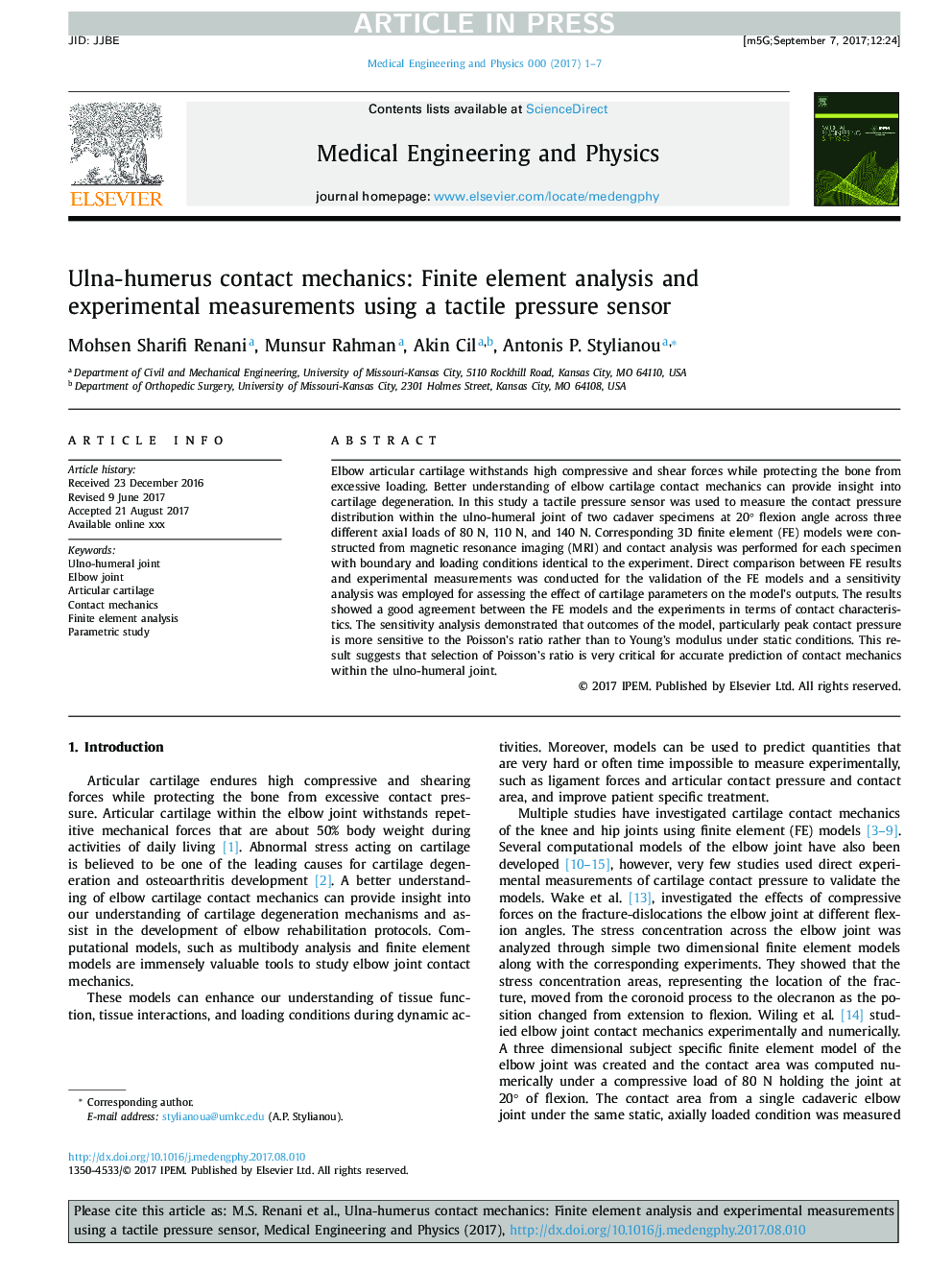| Article ID | Journal | Published Year | Pages | File Type |
|---|---|---|---|---|
| 7237595 | Medical Engineering & Physics | 2017 | 7 Pages |
Abstract
Elbow articular cartilage withstands high compressive and shear forces while protecting the bone from excessive loading. Better understanding of elbow cartilage contact mechanics can provide insight into cartilage degeneration. In this study a tactile pressure sensor was used to measure the contact pressure distribution within the ulno-humeral joint of two cadaver specimens at 20° flexion angle across three different axial loads of 80 N, 110 N, and 140 N. Corresponding 3D finite element (FE) models were constructed from magnetic resonance imaging (MRI) and contact analysis was performed for each specimen with boundary and loading conditions identical to the experiment. Direct comparison between FE results and experimental measurements was conducted for the validation of the FE models and a sensitivity analysis was employed for assessing the effect of cartilage parameters on the model's outputs. The results showed a good agreement between the FE models and the experiments in terms of contact characteristics. The sensitivity analysis demonstrated that outcomes of the model, particularly peak contact pressure is more sensitive to the Poisson's ratio rather than to Young's modulus under static conditions. This result suggests that selection of Poisson's ratio is very critical for accurate prediction of contact mechanics within the ulno-humeral joint.
Related Topics
Physical Sciences and Engineering
Engineering
Biomedical Engineering
Authors
Mohsen Sharifi Renani, Munsur Rahman, Akin Cil, Antonis P. Stylianou,
